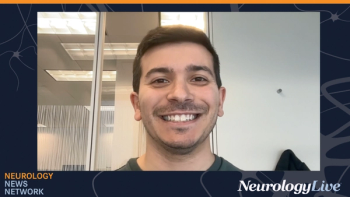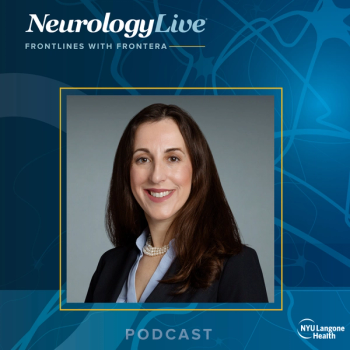
EFF-Nanotransfected Fibroblast Injection Could Treat Ischemic Stroke

Researchers found a 70% infarct resolution and 90% motor recovery in mice injected with the EFF-nanotransfected cells.
Data from a recent study suggest that vasculogenic cell therapies based on nanotransfection-driven (i.e., nonviral) cellular reprogramming have potential to
Researchers found that intracranial delivery of fibroblasts nanotransfected with Etv2, Foxc2, and Fli1 (EFF) led to a dose-dependent increase in perfusion 14 days after injection. Magnetic resonance imaging (MRI) and behavioral tests revealed around 70% infarct resolution and up to around 90% motor recovery in mice treated with the fibroblasts.
“We can rewrite the genetic code of skin cells so that they can become blood vessel cells,” said senior author Daniel Gallego-Perez, PhD, assistant professor, biomedical engineering and surgery, Ohio State University, in a statement.2 “When they’re deployed into the brain, they’re able to grow new, healthy vascular tissue to restore normal blood supply and aid in the repair of damaged brain tissue.”
Gallago-Perez and colleagues used transwell inserts to electrotransfect primary mouse embryonic fibroblasts (pMEFs) with a cocktail of plasmids encoding for EFF at a 1:1:1 ratio. pMEFs transfected with empty plasmids were used as controls. Quantitative reverse transcription polymerase chain reaction (qRT-PCR) analyses at days 1 and 7 after nanotransfection showed a robust increase of EFF expression as compared to controls and immunofluorescence and tube formation assays at day 7 confirmed phenotypic changes consistent with fibroblast-to-induced endothelial cell (iEC) transitions and ability to assemble into blood vessel-like vascular networks in vitro.
READ MORE:
Researchers found a marked increase in intracranial perfusion 7 days after intracranial injection of pMEFs into the subarachnoid space of 9-week-old C57BL/6 mice, 24 hours after EFF nanotransfection compared to controls as confirmed by laser speckle imaging (LSI).
They then intracranially injected EFF- or sham-nanotransfected pMEFs into the subarachnoid space of mice on day 7 after induced 30-minute IS. Mice were monitored for 21 days after stroke, and LSI was used to evaluate cerebral perfusion through the intact skull.
LSI analyses revealed a positive correlation between the number of EFF-nanotransfected cells and the perfusion levels for both the stroke-affected (ipsilateral) hemisphere, with an R2 value of 0.480 (adj. R2, 0.422; P = .018; n = 11) compared to 0.002 (adj. R2, 0.000; P = .894; n = 10) for number of sham-nanotransfected cells delivered, as well as contralateral hemisphere, with an R2 value of 0.696 (adj. R2, 0.662; P = .001; n = 11) compared to 0.002 (adj. R2 = 0.000; P =.906; n = 10) for sham-nanotransfected cells delivered.
“The implications of these observations are twofold, as it suggests that increased intracranial perfusion could potentially be modulated, in part, by a combination of (1) iEC-directed reprogramming of a proportion of the injected pMEFs, some of which appear to cross over to the contralateral hemisphere, and (2) exosome-driven autocrine and/or paracrine vasculogenesis or angiogenesis from preexisting vascular tissue,” Gallego-Perez and colleagues wrote in the paper.
All told, mice treated with EFF-nanotransfected pMEFs demonstrated a non-significant trend (P = .1) of greater stroke volume reduction compared to mice injected with control pMEFs. Researchers also found data to support that at least a portion of the nanotransfected pMEFs is structurally involved in the intracranial de novo formation of induced vasculature (iVas).
Gallago-Perez identified weight loss as a confounder for stroke volume reduction, as mice with weight loss below 17% correlated with similar levels of spontaneous reduction in infarct volume regardless of treatment. When weight loss exceeded 17%, mice treated with the nanotransfected cells had significantly improved infarct resolution compared to mice treated with control.
“Together, our results suggest that intracranial deployment of EFF-nanotransfected cells can lead to an overall improvement in gross motor skills in stroke-affected mice. However, additional studies are needed for a more in-depth evaluation of the impact of this potential therapeutic strategy on fine motor skills, which are also markedly affected by the stroke lesion in the motor cortex,” Gallago-Perez and colleagues concluded their paper.
Quantitative analyses show that compared to controls, mice injected with EFF-nanotransfected fibroblasts had a significantly higher count of neurons. Reduced glial fibrillary acidic protein (GFAP) immunoreactivity also suggests considerably less astroglial scarring in the stroke-affected hemisphere.
Significant motor improvements were seen 14 and 21 days after stroke in mice injected with the EEF-nanotransfected cells compared to those injected with sham-nanotransfected cells. These differences were seen in parameters such as average speed, traveled distance, time mobile, and counterclockwise rotations.
“This is a proof of concept in a biological system, in a relevant model of preclinical stroke, that demonstrates the potential that, you can have a stroke and then in a delayed fashion, you can receive this treatment and you can have an improvement in your outcome,” added study co-author Shahid M. Nimjee, MD, PhD, neurological surgeon, Wexner Medical Center, Ohio State University, to the statement.
REFERENCES
1.Lemmerman LR, Balch MHH, Moore JT, et al. Nanotransfection-based vasculogenic cell reprogramming drives functional recovery in a mouse model of ischemic stroke. Sci. Adv. 2021; 7(12) doi: 10.1126/sciadv.abd4735
2. New technology ‘retrains’ cells to repair damaged brain tissue in mice after stroke. News release. Ohio State University Wexner Medical Center. Published online March 19, 2021. http://osuwmc.multimedia-newsroom.com/index.php/2021/03/19/study-retraining-cells-may-reverse-brain-damage-after-stroke/
Newsletter
Keep your finger on the pulse of neurology—subscribe to NeurologyLive for expert interviews, new data, and breakthrough treatment updates.




















